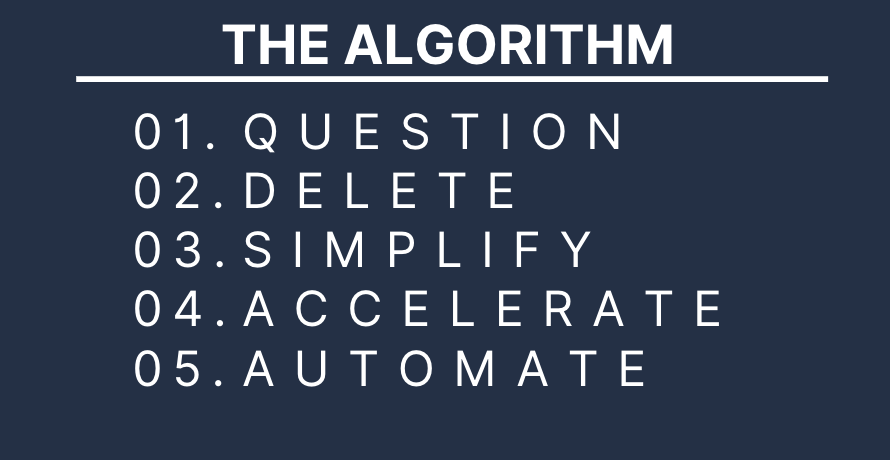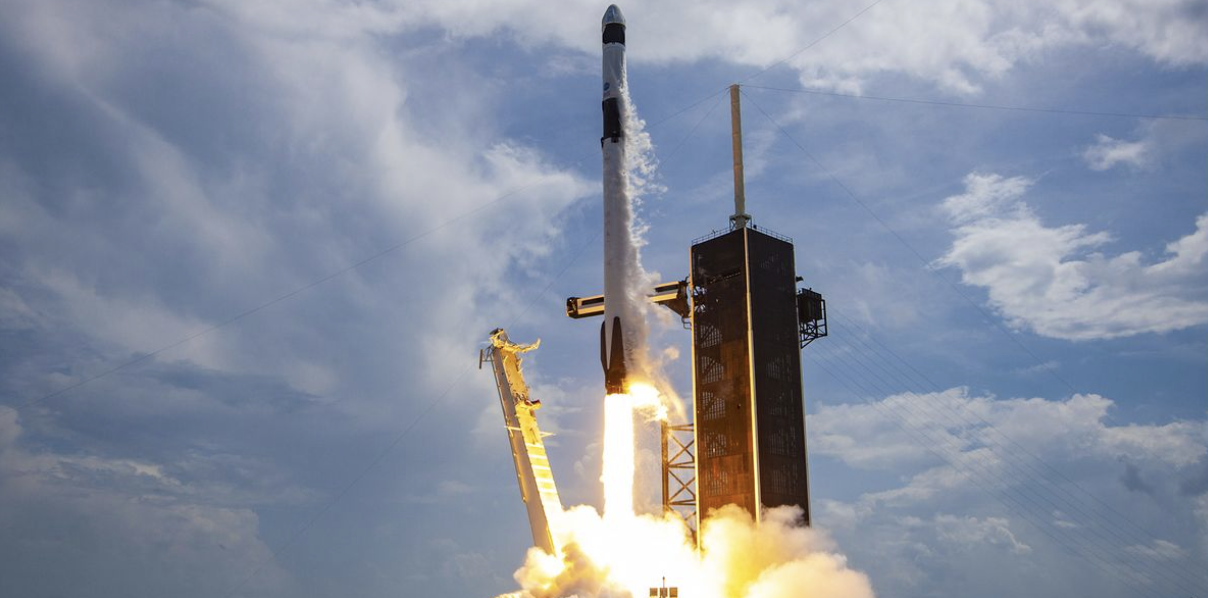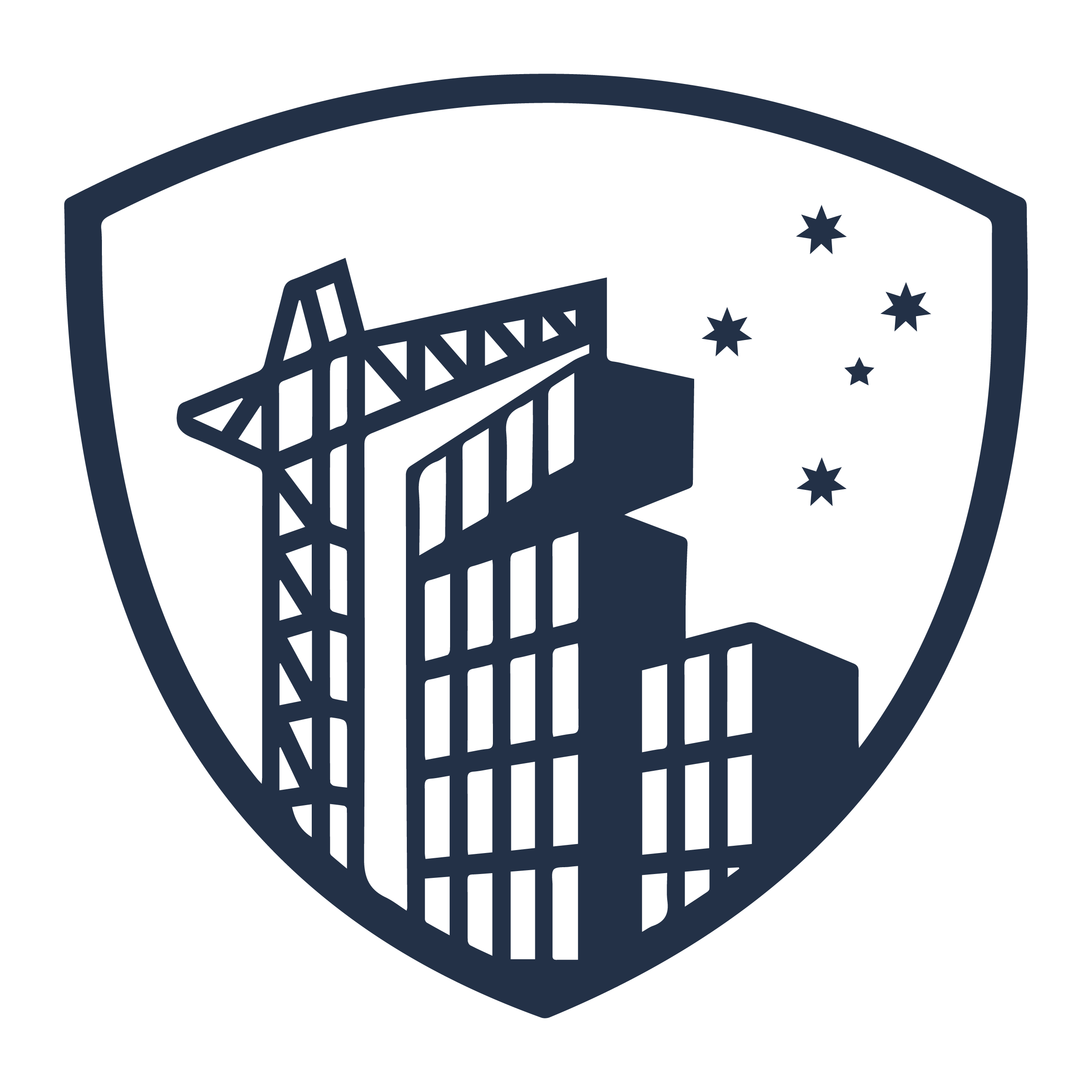Contents
.png?width=320&name=Screenshot%202024-01-22%20at%203.49.07%20PM%20(2).png)
This blog is written by Caitlin Bigelow. You can connect with her on LinkedIn here.
---
Despite what you may think of Elon Musk personally, he’s the most successful entrepreneur of the 21st century.
Tesla, worth $850 Billion.
SpaceX, worth $150 Billion.
The Boring Company, worth $5.7 Billion.
Nueralink, worth $5 Billion.
…and X, (Twitter) worth $19 Billion (paid $44 Billion).
Proof that you can’t win them all.
As I read through Isaacson’s biography of Musk I found myself bookmarking pages, scribbling in the margins, and highlighting sections I found particularly relevant to manufacturing industries.
Before we dive in on my personal takeaways after reading 667 pages, I think it’s important to note that volumetric construction is a vastly different product than cars or spaceships. Michael Marks, an interim CEO at Tesla who went on to found Katerra, learned that the hard way.
Regardless of the differences, there are lessons to be learned. Here are some of my personal takeaways that can be applied to any manufacturing industry.
Build a Constant Feedback Loop from Design to Manufacturing.
Whether you’re building a rocket ship or a building, there are thousands of design decisions that need to be made. Musk felt it imperative that design and engineering teams understand how their decisions impacted manufacturing.
The two metrics he optimized above all else were cost and throughput. His complete obsession was critical to propelling Tesla and SpaceX into multi-billion-dollar companies.
Within the theme of feedback loops, he focused on two metrics about all else:
-
Throughput
-
Cost
Focus on Throughput
When designing the Fremont Tesla factory, Musk put the cubicles for the engineers right on the edge of the assembly lines so they could see the lights flashing and hear the complaints when one of their design elements caused a slowdown.
He corralled the engineers to walk the assembly line. He kept his desk in the middle of the factory floor (with a pillow underneath so he could spend the night when he wanted).
He implemented the same principle at SolarCity when he discovered how long it was taking to install solar roofs. He required that his engineers install roofs themselves so they could understand how every decision they made had a time impact.
He was maniacal about questioning every assumption. Are three screws needed or would one suffice? How can this be simplified? What can be deleted?
Having architects, designers, and the manufacturing team in a constant feedback loop will naturally streamline design to allow for faster throughput. Those on the factory floor should be consulted and listened to. Throughput can be measured, tracked, and improved upon.
Focus on Cost
Elon also had an internal calibration helping guide cost that he called the ‘idiot index’. The idiot index measures how much a finished component costs compared to the raw materials. For example, if the raw materials of a component cost $100 but that component costs $1,000 the design is likely too complex or the manufacturing process too challenging and should be questioned and simplified.
Reading about Elon ripping into the bloated Aerospace industry that had gotten fat, happy, and complacent on cost-plus government contracts was an especially enjoyable section of the book for me.
Elon makes it a priority to bring the cost of the engines down at SpaceX. Astonishingly he is able to reduce the cost of his Falcon 9 rocket engine from ~$2,000,000 to $200,000.
Say what you want about the man, but that’s a jaw-dropping accomplishment.
Another inspiring section was reading about how he worked to re-design the die-cast of the front and rear structures of its Model Y. Instead of having 400 individual components to the bottom chassis of the car Tesla created the largest ‘gigacast’ process that allowed them to die cast nearly the entirety of the underbelly of the car in a single mold.
The pioneering of huge presses using 9,000 tons of clamping pressure removed massive amounts of cost and complexity from their manufacturing process.
At the end of the day all of this was possible because of a maniacal focus on increasing throughput through simplification and decreasing cost.
Hold Employees Accountable
I wouldn’t hold up Elon as a beacon for leadership principles. He’s unempathetic, a challenging boss, and unrelenting, but he holds employees accountable for results.
“You can’t tell people to get their shit together, and then when they don’t get their shit together nothing happens to them.” Says Musk.
Musk doesn’t hesitate to make changes that other managers may have balked at. I don’t always agree with his methodology on how he goes about these changes, but I do respect the results of being decisive and shaking things up when it calls for it.
Elon Musk’s “Algorithm”
Another enjoyable part of Issacson’s biography is the examples used on how Musk applies what he calls his “Algorithm”. In essence, it’s a methodology he applies across his companies on everything from eclectic cars to reusable satellites. Here it is quoted in full:

Question every requirement.
Each should come with the name of the person who made it. You should never accept that a requirement came from a department, such as from "the legal department" or "the safety department." You need to know the name of the real person who made that requirement. Then you should question it, no matter how smart that person is. Requirements from smart people are the most dangerous because people are less likely to question them. Always do so, even if the requirement came from me. Then make the requirements less dumb.
Delete any part or process you can.
You may have to add them back later. In fact, if you do not end up adding back at least 10% of them, then you didn't delete enough.
Simplify and optimize.
This should come after step two. A common mistake is to simplify and optimize a part or a process that should not exist.
Accelerate cycle time.
Every process can be speeded up. But only do this after you have followed the first three steps. In the Tesla factory, I mistakenly spent a lot of time accelerating processes that I later realized should have been deleted.
Automate.
That comes last. The big mistake in Nevada and at Fremont was that I began by trying to automate every step. We should have waited until all the requirements had been questioned, parts and processes deleted, and the bugs were shaken out.
Do You Have to Like Musk to Learn from Him?
In researching for this article, I came across a great post by David Heinemeier Hansson who said,
.png?width=736&height=368&name=Elon%20Musk%20Blog%20Heading%20Image%20(8).png)
I couldn’t agree more.
Throughout the book I found myself shaking my head in disbelief thinking, ‘gosh, I would never do that.’ but ten pages later I was highlighting a section where I learned something new, that I felt I could personally apply.
It’s ok to cherry-pick and choose what you can utilize and leave the rest behind. I hope this summary was helpful in your personal quest to improve manufacturing in whatever industry you are in.
As always, feel free to connect with me on LinkedIn here.
.png)


